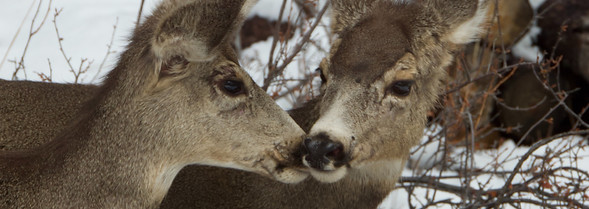
explore the Natural world

Scroll to Learn
Biology
There are many deer species in the world, and a number of cousin-species like elk (wapiti), caribou, and moose! But in North America, you're most likely to see one of two species of deer - the mule deer, and the white-tailed deer.
White-tailed deer are most commonly found east and south of the Rocky Mountains, and in its valleys. They can also be found all throughout Mexico, and as far south as Peru! They're usually smaller than mule deer, slender, and tan in color. Their antlers, which the males lose and grow back every year, are not quite as large and branching as those of the mule deer.

Mule deer are often larger when compared to white-tailed deer. They have grayish coats that get darker in winter, with bigger ears and more wide-set antlers with forking branches. They occupy areas with higher elevation, being found from the Rocky Mountains to the west coast and into Canada. They may share their territory in some areas with the white-tail deer, wapiti, and even moose!
Like their cousins the caribou, these deer make long migrations every year. They travel from low elevation in the winter to high elevation in the summer. This helps them avoid intense weather and food shortages! Deer will use the same path every time, almost like they're following a highway road. This can be a problem if environmental changes happen around their migratory path, meaning they cannot get sufficient food or water along the way. Human intervention, like building fences, roads, and even whole houses in the middle of these migratory paths also causes a lot of problems for the deer.
These migration patterns are hard to change, as they are an instinctual drive! It takes many generations for deer to shift their path around these obstacles, if they can at all.

